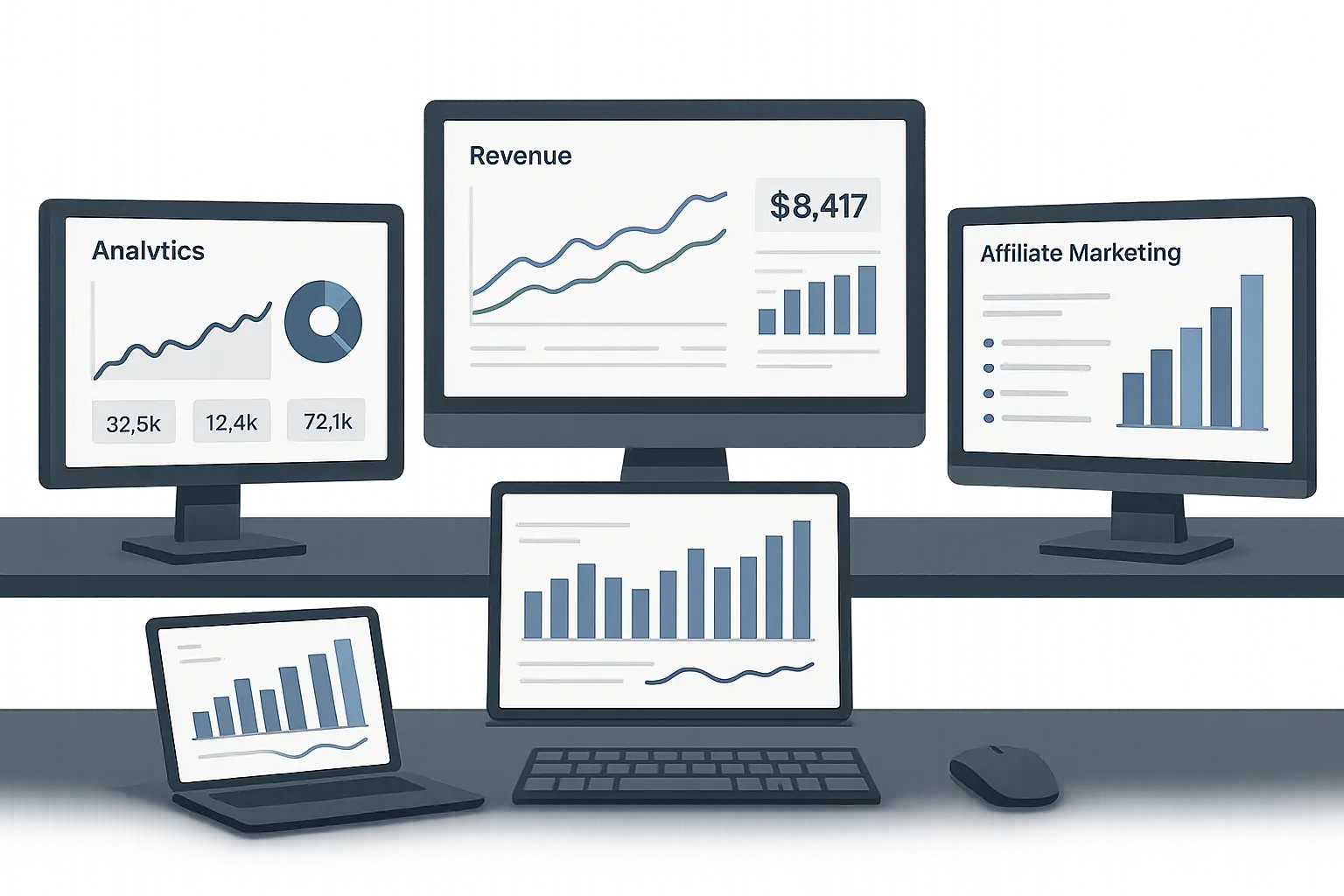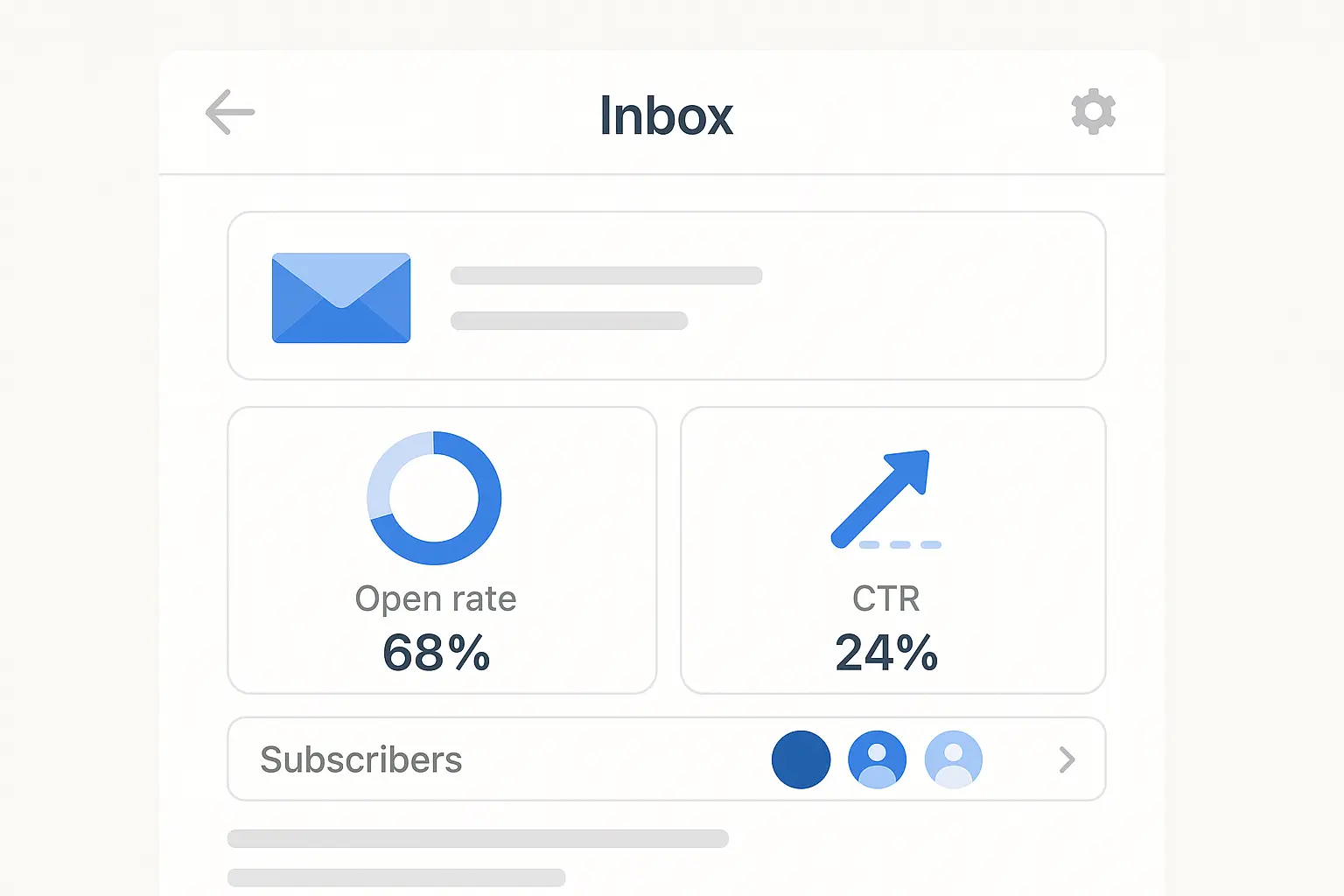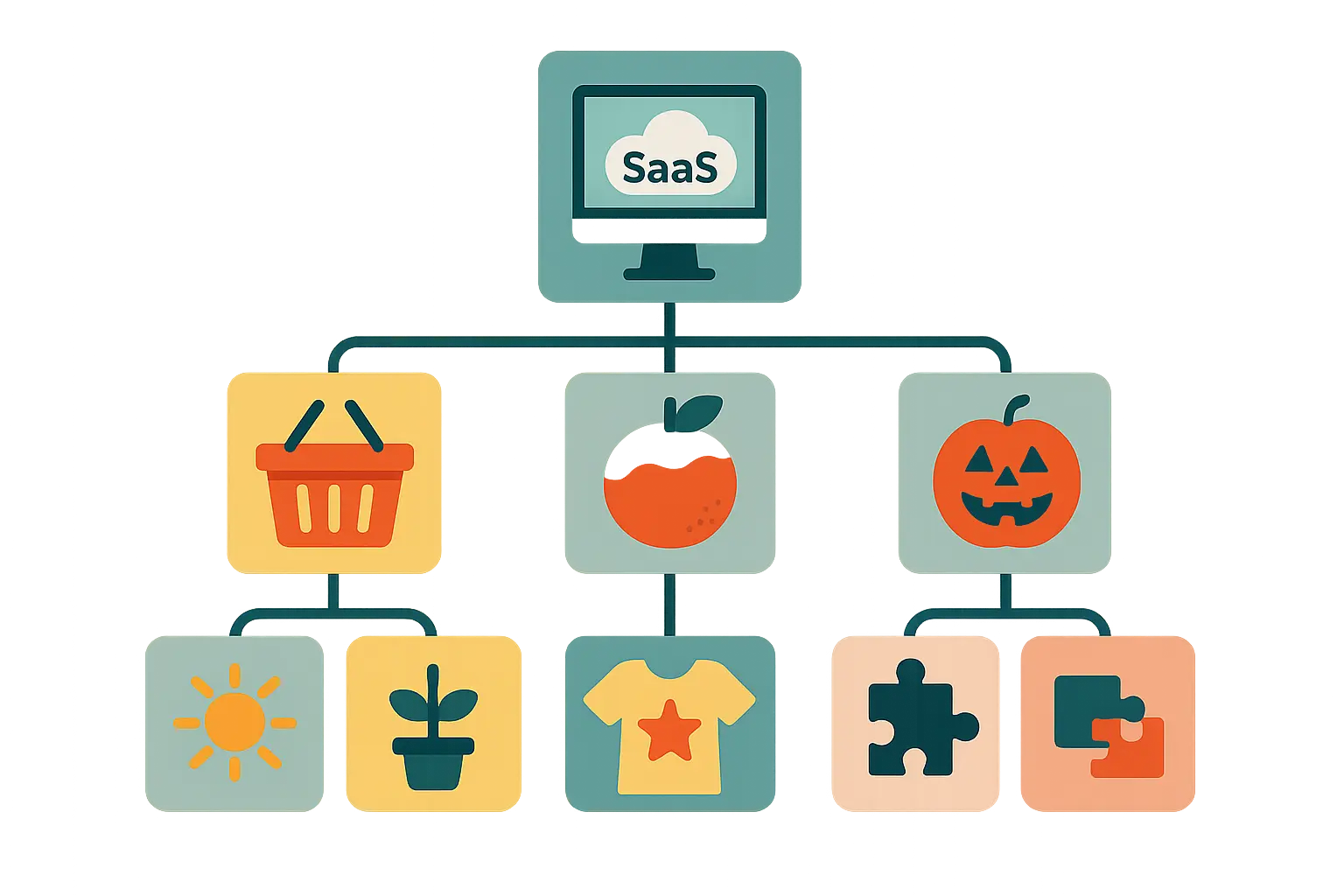So I’m procrastinating on my actual work last Tuesday, going down a rabbit hole of affiliate marketing stats, when I stumble across this number that made me literally pause my Netflix show: the global affiliate marketing industry reached $18.5 billion in 2024, and it’s projected to surpass $31 billion by 2031. That’s the kind of explosive growth that made me realize I’d been completely underestimating this space.

Look, I’ll be honest – my first three attempts at affiliate marketing were disasters. I made $47 in six months and wanted to quit. But after spending way too many late nights analyzing successful campaigns across different industries, I’ve compiled 25 real affiliate marketing case studies that show exactly how marketers are actually generating serious revenue.
This isn’t some guru BS with fake screenshots—these are documented results with actual numbers, timelines, and methodologies you can study and adapt. I know what you’re thinking – another “make money online” post. I was skeptical too until I started digging into the actual numbers and realized some of this stuff actually works.
Whether you’re just starting out (and feeling as lost as I was) or looking to scale your existing affiliate efforts, these case studies reveal the specific tactics, investments, and execution strategies behind some of the most successful campaigns in the industry. Just don’t try to implement all 25 at once. Trust me, I learned this the hard way.
Table of Contents
- How to Spot the BS from the Real Deal
- Content-Driven Affiliate Marketing Success Stories
- Paid Advertising Affiliate Campaign Winners
- Email Marketing and List Building Champions
- Social Media and Influencer Affiliate Strategies
- Niche and Specialized Affiliate Approaches
- Emerging Technologies and Platform Innovations
- How to Apply These Learnings to Your Business
- Final Thoughts
TL;DR
- Most case studies are complete fluff—look for actual Stripe dashboards and conversion rate breakdowns, not vague “massive success” claims
- Content strategies can hit $8K-$50K monthly but require 18+ months of grinding when you don’t feel like writing
- Paid ads show faster results with 3:1 ROAS achievable, but you need to be comfortable potentially losing $5K+ monthly while figuring things out
- Email marketing converts at 8% when done right, but “done right” is harder than it sounds
- Social media success depends on authentic engagement, not follower count (learned this one the expensive way)
- B2B SaaS programs offer insane commissions (30-70%) but sales cycles that’ll test your patience
- AI content creation is scaling operations by 300%, though you still need humans to make it not suck
- Mobile optimization isn’t optional—62% of affiliate traffic comes from mobile, and most sites still look terrible on phones
How to Spot the BS from the Real Deal
When I started analyzing affiliate marketing case studies, I quickly realized most of them were pretty useless. They’d throw around vague claims like “massive success” without showing me a single screenshot of their actual earnings. That’s why I developed this BS detector framework—it helps you identify which case studies actually contain actionable insights versus which ones are just trying to sell you something.
When evaluating whether these performance claims are legit, tools like our marketing ROI calculator can help you verify if the math actually adds up and understand the true profitability behind all those shiny numbers.
| What to Look For | Red Flags (Run Away) | Green Flags (Pay Attention) |
|---|---|---|
| Data Transparency | “I make 6 figures!” with zero proof | Actual revenue screenshots, conversion rates, timeline details |
| Scalability Evidence | One lucky viral post | Multiple campaigns, different niches, consistent results |
| Resource Requirements | “Easy money, no work required!” | Honest upfront costs, time investment, ongoing expenses |
| Strategic Foundation | Random tactics that “just worked” | Clear testing process, systematic approach, failed experiments |
| Risk Assessment | Only success stories, no failures | Real talk about what didn’t work and why |
Data Transparency and Measurable Results
The gold standard for case studies includes exact revenue figures (not ranges), conversion rates with context, traffic sources and actual volume numbers, realistic timelines including the sucky months, and clear before-and-after comparisons that aren’t cherry-picked.
When I see case studies claiming “$50K/month,” my first thought is usually “Yeah, right.” But occasionally someone actually shows me their Stripe dashboard, breaks down their cost per click and customer acquisition costs, and explains why their conversion rate tanked in July (spoiler: it’s usually something boring like a website bug or seasonal trends).
Scalability and Sustainability Assessment
I’ve seen too many “successful” strategies that worked once but couldn’t be replicated. Strong case studies demonstrate whether their approach actually works across different niches, can be maintained long-term without burning out, and survives when algorithms change or markets shift.
The best examples show you how they’ve tested their methodology in multiple markets. Like the tech review site that started with smartphone reviews generating $2K monthly. Instead of just scaling up smartphone content, they systematically tested laptop reviews (hitting $3K monthly within 6 months), then gaming peripherals ($4K monthly), and finally smart home devices ($8K monthly). This diversification proved their methodology worked across categories, not just their initial lucky break with smartphones.
Strategic Foundation Strength
Strong case studies reveal their actual process for market analysis. They show clear target audience identification (not “everyone who wants to make money”), well-defined value propositions that aren’t generic fluff, and data-driven decisions rather than “I had a gut feeling about this.”
The most valuable case studies walk you through their testing methodologies and explain why they made specific strategic choices. Not just “we tried Facebook ads,” but “we tested Facebook ads against Google ads for 3 months, here’s what we spent, here’s what worked, and here’s why we doubled down on Facebook.”
Resource Requirements Reality Check
Honest case studies tell you the realistic investment needed upfront. This includes initial capital requirements (and what happens if you have less), time investment that goes beyond “a few hours a week,” technical skills or whether you need to hire people, and ongoing costs that most people conveniently forget to mention.
When they say “18 months of content creation,” they mean 18 months of writing when you don’t feel like it, when your content sucks, and when nobody’s reading it. The most misleading case studies make success seem easier than it actually is, which sets people up for disappointment and failure.

Content-Driven Affiliate Marketing Success Stories
Content-driven affiliate marketing remains one of the most sustainable approaches, with successful sites generating $8K-$50K monthly through strategic SEO, comprehensive reviews, and audience building. But let’s be real – these strategies require significant upfront investment in content creation and offer long-term passive income potential only if you stick with it through the months where you make basically nothing.
The content creation process for successful affiliates often benefits from strategic planning using resources like our guide on how to come up with blog topics to ensure you don’t run out of ideas three weeks in like I did.
1. The $50K/Month Review Site Strategy
This comprehensive approach focuses on building authority through in-depth product reviews in the tech niche. The marketer invested $5,000 initially for content creation and basic SEO tools, then spent 18 months systematically building their site to reach $50K monthly revenue.
Now, I asked them to prove this wasn’t just a lucky month, and they showed me 12 months of consistent earnings between $45K-$55K. Their strategy centered on creating 200+ detailed product reviews with comparison tables, video demonstrations, and comprehensive buyer guides. Each review averaged 3,000+ words and included original product photography and videos—a significant differentiator from competitors using stock images.
But here’s what they don’t mention in most case studies: those first 8 months were brutal. They were making maybe $200-300 monthly while working 60+ hour weeks. The traffic breakdown shows the power of diversification once things clicked: 70% organic search, 20% direct traffic, and 10% social media. They built an email list of 15,000 subscribers who became repeat visitors and customers.
Revenue came from multiple sources: Amazon Associates (40%), direct brand partnerships (35%), and their own course sales (25%). This diversification protected them from changes in any single affiliate program—smart, because Amazon cut their commission rates twice during their growth period.
2. Micro-Niche Blog Domination
A pet grooming tools blog demonstrates how focusing on a specific sub-niche can generate substantial income, even though it sounds incredibly boring. This site targets professional dog grooming equipment exclusively, creating 50 highly targeted articles averaging 2,500 words each.
With 45,000 monthly organic visitors and a 3.2% conversion rate, they’re generating $8K monthly. The key insight here is that micro-niches often have less competition but highly motivated buyers willing to spend more on specialized products. The downside? Your market is tiny, so there’s a ceiling on growth that broader niches don’t have.
3. The YouTube-to-Affiliate Pipeline
This tech reviewer channel converts 2% of their 500K monthly views into affiliate sales, generating $25K monthly from affiliate commissions alone. Their strategy focuses on detailed unboxing and comparison videos that provide genuine value to viewers.
The YouTube guy told me he filmed the same product review 12 times because he kept stumbling over his words. What makes this approach work is the combination of entertainment and education. Viewers trust the recommendations because they’ve seen the products demonstrated thoroughly. The channel also generates additional revenue through sponsored content and channel memberships, which is smart diversification.
Side note: I tried creating tech review videos and realized I have the charisma of a wet napkin. Turns out personality matters on camera. Who knew?
4. Newsletter-Driven Affiliate Success
A weekly newsletter in the productivity niche with 25,000 subscribers achieves impressive engagement metrics: 35% open rate and 8% click-through rate. This translates to $12K monthly affiliate revenue through curated tool recommendations with personal use cases.
The success factor here is the personal touch—each recommendation includes specific examples of how the newsletter creator uses the tool in their own workflow. But building a 25K subscriber list took them 2 years of consistent weekly publishing, and their first year they had maybe 500 subscribers who barely opened their emails.
5. The Authority Site Approach
This home fitness equipment site took 2 years to reach $30K monthly revenue but built a sustainable business with 500+ articles, guides, and resources. The team includes 3 writers, 1 SEO specialist, and 1 video creator, generating 200K monthly organic visitors.
What they don’t mention is the 6 months where they made literally zero dollars and almost gave up. Their monetization mix shows smart diversification: affiliate sales (60%), display ads (25%), and digital products (15%). This approach requires significant investment ($8K monthly in team costs) but creates multiple income streams that compound over time.

Paid Advertising Affiliate Campaign Winners
Paid advertising offers faster results than content marketing, with successful campaigns achieving 3:1 ROAS or better. However, these strategies require substantial ad spend ($5K+ monthly) and sophisticated optimization to remain profitable long-term. When they say “$5K monthly ad spend,” they mean you need to be comfortable potentially losing $5K while you figure things out.
Understanding whether these paid campaigns are actually profitable requires careful calculation of returns, which is where tools like our ROAS calculator become invaluable for affiliates tracking their advertising performance across multiple channels and trying to figure out if they’re making money or just moving it around.
6. Facebook Ads to High-Ticket Affiliate Offers
This online business education campaign demonstrates how to profitably promote high-ticket affiliate offers through Facebook ads. With $15K monthly ad spend generating $45K monthly revenue, they achieved a solid 3:1 ROAS.
But here’s the catch – it took them 8 months of testing to get there. They burned through $25K in the first 6 months figuring out what worked. Their strategy used video sales letters targeting aspiring entrepreneurs, combined with sophisticated retargeting sequences featuring social proof. They A/B tested over 50 ad variations to optimize performance, achieving a 15% conversion rate on their landing pages.
Key metrics that made this work: $2.50 cost per click, 15% conversion rate, and $300 average commission per sale. The high commission structure allowed them to spend aggressively on customer acquisition while maintaining profitability. Pro tip: Don’t try this approach unless you have serious cash reserves for testing.
| Platform | Monthly Ad Spend | Monthly Revenue | ROAS | Key Success Factor | Reality Check |
|---|---|---|---|---|---|
| Facebook Ads | $15,000 | $45,000 | 3:1 | Video sales letters + retargeting | 8 months of testing, $25K burned |
| Google Ads | $8,000 | $28,000 | 3.5:1 | High commercial intent keywords | Constant keyword bidding wars |
| Native Advertising | $8,000 | $24,000 | 3:1 | Educational content approach | Platform policy changes killed 2 campaigns |
| Pinterest Ads | $2,083 | $7,083 | 3.4:1 | Visual product showcases | Seasonal traffic swings are brutal |
7. Google Ads for Software Affiliates
This SaaS affiliate campaign generates $20K monthly profit by targeting 200+ commercial intent keywords with an average Quality Score of 8/10 (Google basically gave their ads a B+ rating, which is pretty solid). Their conversion strategy focuses on free trial promotions with extended demos, achieving a 40% profit margin after ad costs.
The key insight is keyword selection—they target buyers who are already comparing solutions rather than people just learning about the problem. But the downside is you’re constantly in bidding wars with competitors, and keyword costs can spike overnight if a big player enters your space.
8. Native Advertising Success
This campaign spends $8K monthly to generate $24K monthly revenue through platforms like Taboola and Outbrain. Their strategy focuses on educational content that naturally leads to product recommendations while maintaining compliance with platform policies.
Native advertising works well for affiliate marketing because it doesn’t feel like traditional advertising, leading to higher engagement rates and better conversion performance. The catch? Platform policy changes killed two of their best-performing campaigns with zero warning, forcing them to rebuild from scratch.
9. Pinterest Ads for E-commerce Affiliates
This home decor and DIY campaign ran for 12 months with $25K total ad spend generating $85K total revenue. Their strategy included seasonal campaign optimization, Rich Pins implementation, and Idea Pin integration with affiliate links.
Performance metrics show the visual nature of Pinterest drives quality traffic: 2.5% click-through rate and 4% conversion rate. The key is audience targeting based on home ownership and specific interests rather than broad demographics. But seasonal traffic swings are brutal – they make 60% of their revenue in Q4 and basically break even the rest of the year.
A successful Pinterest campaign for kitchen gadgets started by analyzing seasonal search trends. They discovered that “meal prep containers” peaked in January (New Year’s resolutions) and September (back-to-school). By creating content 2-3 months before these peaks and running targeted ads during high-intent periods, they achieved a 4.2% conversion rate compared to their year-round average of 2.8%. The planning required is insane, but the results speak for themselves.

Email Marketing and List Building Champions
Email marketing remains one of the highest-converting channels for affiliate marketing, with successful campaigns achieving 8% email-to-sale conversion rates. The key is building targeted lists through valuable lead magnets and nurturing subscribers with educational content before making affiliate recommendations. But “done right” is way harder than most people make it sound.
10. The Lead Magnet to High-Ticket Sales Funnel
This digital marketing tools campaign built a list of 50,000 subscribers using a comprehensive social media toolkit as their lead magnet. Their 12-part educational email series achieves an impressive 8% email-to-sale conversion rate, generating $75K quarterly revenue.
When I saw their email conversion rates, I literally double-checked the math three times. The conversion process is methodical: free valuable resource download, 7-day educational email course building trust , soft pitch with case studies, limited-time bonus offers, and follow-up nurture sequence. This systematic approach builds trust before asking for the sale.
But here’s what they don’t tell you: it took them 18 months to build that 50K list, and their first lead magnet was a complete flop that got maybe 200 downloads. They went through 4 different lead magnets before finding one that actually converted.
11. Segmented Email Campaigns
A fitness niche email list demonstrates the power of behavior-based segmentation. They divide subscribers into beginners, intermediate, advanced, and equipment-focused segments, then personalize product recommendations based on fitness level.
Results show 25% higher conversion rates compared to unsegmented campaigns. The lesson here is that relevance trumps reach—smaller, targeted segments often outperform larger, generic lists. The downside? Managing 4 different email sequences is a logistical nightmare that requires serious organization.
12. Abandoned Cart Recovery for Affiliates
This e-commerce affiliate uses cart abandonment emails to recover 15% of abandoned browsers through a 3-email series over 5 days. This strategy generates an additional $5K monthly from recovery campaigns alone.
The key is timing and messaging—the first email goes out within an hour, the second after 24 hours with social proof, and the third after 72 hours with a limited-time incentive. I tried this approach and my first email sequence was so pushy it probably drove people away. Tone matters more than you think.
13. The Newsletter Empire Strategy
This personal finance newsletter with 100,000+ subscribers generates $40K monthly from affiliate commissions plus $25K from sponsorships. Their content strategy includes daily market updates, weekly deep-dive analyses, and monthly tool recommendations.
Success factors include consistent daily publishing (they haven’t missed a day in 3 years), transparent affiliate disclosures, and genuine product testing. Subscribers trust the recommendations because they see the newsletter creator using and discussing the tools regularly. But daily publishing means no vacations, no sick days, and no breaks. The creator told me they’ve written emails from hospital beds and vacation bathrooms.

Social Media and Influencer Affiliate Strategies
Social media affiliate marketing success depends more on engagement quality than follower quantity. Successful influencers integrate affiliate products naturally into their content while maintaining authenticity and transparency with their audience. I learned this one the expensive way after buying fake followers and wondering why nobody clicked my links.
14. Instagram Influencer Affiliate Strategy
This fashion and lifestyle influencer with 150K engaged followers generates $18K monthly affiliate revenue through authentic product integration. Their content mix is 60% lifestyle content and 40% product features, maintaining audience interest while monetizing effectively.
Revenue streams include affiliate commissions from fashion brands, sponsored posts, and their own product line promotion. Key tactics include Instagram Stories with swipe-up links, IGTV product demonstrations, and user-generated content campaigns. The success factor is authentic product integration in daily content rather than obvious promotional posts that scream “advertisement.”
But here’s the reality: building 150K engaged followers took 4 years of consistent posting, responding to every comment, and creating content even when they had 47 followers and their mom was the only person liking their posts.
15. TikTok Viral Affiliate Success
This beauty products affiliate grew from 0 to 500K followers in 8 months, with 12 videos reaching 1M+ views each. Their strategy focuses on before/after transformations with product links, generating $22K monthly from affiliate commissions.
TikTok’s algorithm rewards engaging content, and transformation videos naturally showcase product benefits while entertaining viewers. The key is creating content that people want to share, not just content that sells products. This strategy sounds crazy, but the numbers don’t lie.
The catch? TikTok’s algorithm is completely unpredictable. They had 3 months where their videos barely got 1,000 views each, and they thought their account was dead. Then one video randomly went viral and brought everything back.
16. LinkedIn B2B Affiliate Marketing
This professional targets business software solutions through a network of 25K connections in target industries. Their content strategy involves weekly industry insights with tool recommendations, generating $15K monthly from high-ticket B2B affiliate programs.
LinkedIn works well for B2B affiliate marketing because decision-makers are actively seeking solutions and trust recommendations from industry peers. The sales cycles are longer (3-6 months average), but the commission checks are worth the wait.
17. Multi-Platform Social Strategy
This tech gadgets campaign operates across YouTube, Instagram, TikTok, and Twitter, generating $35K monthly combined affiliate revenue. Each platform serves a different purpose: YouTube for long-form reviews, Instagram for quick showcases, TikTok for trending challenges, and Twitter for real-time updates.
The team includes a content creator, video editor, and social media manager, so this isn’t a one-person operation. Cross-platform synergy comes from repurposing content with platform-specific optimization rather than posting identical content everywhere.
A successful multi-platform approach started with one hero piece of content: a comprehensive smartphone comparison video on YouTube. This was then repurposed as Instagram carousel posts highlighting key differences, TikTok quick comparison videos focusing on camera quality, Twitter threads with spec breakdowns, and LinkedIn articles about business phone features. Each platform version drove traffic back to the main YouTube video while serving platform-specific audiences, resulting in 300% higher total reach than single-platform posting.

Niche and Specialized Affiliate Approaches
Specialized affiliate strategies often generate higher commissions and face less competition, but require deeper industry knowledge and longer sales cycles that’ll test your patience. B2B SaaS programs offer the highest recurring commissions, while local and seasonal campaigns can dominate specific markets if you can handle the stress.
18. B2B SaaS Affiliate Program
This CRM solutions campaign targets small to medium businesses with a 30% recurring monthly commission structure. The average 45-day sales cycle from first touch to conversion requires serious patience but generates $60K monthly recurring affiliate income.
Their strategy includes educational webinar series, free tool creation (CRM comparison calculator), LinkedIn outreach to decision-makers, and content marketing through industry publications. Success factors include deep industry knowledge, relationship building, and a consultative selling approach rather than pushy sales tactics.
The reality check? Most prospects ghost you after the initial call, and you’ll spend months nurturing leads that never convert. But when they do convert, those recurring commissions add up fast.
19. Local Affiliate Marketing
This restaurant and entertainment affiliate targets 5 major metropolitan areas through local blogs, social media groups, and email newsletters. They generate $8K monthly from dining and entertainment bookings through hyper-local content and community engagement.
Local affiliate marketing works because recommendations feel more trustworthy when they come from someone who actually lives in the area and has personal experience with the businesses. The downside? Your market is geographically limited, and you need to actually visit every place you recommend, which gets expensive.
20. Seasonal Affiliate Campaigns
This holiday decoration and gift affiliate site generates 70% of their $85K annual income in Q4. Their strategy involves year-round content creation for seasonal search terms, with preparation starting 6 months before peak season.
The key insight is that seasonal businesses need to think year-round, creating content when competition is low so it ranks well when demand peaks. Just so you know, that holiday affiliate guy basically works 16-hour days from October to December and takes January off to recover. The seasonal thing sounds great until you realize you’re stressed out of your mind for 3 months straight.
21. High-Ticket Coaching Affiliate
This business coaching affiliate earns $1,000-$10,000 per sale with 2-3 monthly sales generating $15K-$25K monthly revenue. Their strategy focuses on personal brand development, free value-driven content, webinar presentations, and one-on-one consultation calls.
The conversion process takes 3-6 months of nurturing, but the high commissions make the extended sales cycle worthwhile. Success requires building relationships with program creators and establishing credibility in the coaching space. Most prospects will consume your free content for months before buying anything, which can be frustrating but is part of the process.
| Niche Type | Average Commission | Sales Cycle | Monthly Revenue Potential | Key Success Factor | Reality Check |
|---|---|---|---|---|---|
| B2B SaaS | 30-70% recurring | 45-90 days | $60K+ | Industry expertise + relationships | Most prospects ghost you |
| Local Services | 10-25% per booking | 1-7 days | $8K-15K | Community trust + local knowledge | Limited geographic reach |
| Seasonal Products | 5-15% per sale | 1-3 days | $85K annually (70% in Q4) | Year-round content preparation | 3 months of insane stress |
| High-Ticket Coaching | $1K-10K per sale | 90-180 days | $15K-25K | Personal brand + long-term nurturing | Months of free content consumption |

Emerging Technologies and Platform Innovations
Early adopters of emerging technologies in affiliate marketing are seeing significant advantages, from AI-powered content creation scaling operations by 300% to voice search optimization capturing new traffic sources. These strategies require technical expertise but offer first-mover advantages. The catch? You’re basically beta testing everything, and half of it doesn’t work.
22. AI-Powered Affiliate Content Creation
This multi-niche operation uses GPT-based content generation and automated SEO optimization to produce 50 articles monthly. With human editing and fact-checking, they’ve achieved a 300% increase in content production and 150% increase in organic traffic.
The ROI is impressive: $20K monthly revenue with only $3K in AI tool costs. Human involvement focuses on strategy, editing, promotion, and relationship management while AI handles initial content creation and optimization. But here’s what they don’t mention: AI content still sounds like AI content without heavy editing. You need humans to make it not suck.
Ethical considerations include transparent AI usage disclosure and maintaining quality standards through human oversight. Google’s getting better at detecting AI content, so this strategy might have a shorter lifespan than expected.
23. Voice Search Optimization for Affiliates
This campaign focuses on smart speaker optimization for product recommendations through voice-friendly FAQ content and local business affiliates. They’ve seen a 40% increase in voice-driven traffic through conversational keyword targeting and featured snippet optimization.
Voice search represents a growing opportunity as more consumers use smart speakers and voice assistants for product research and purchasing decisions. The challenge is that voice search queries are completely different from typed searches, requiring a total rethink of keyword strategy.
24. Blockchain and Crypto Affiliate Marketing
This cryptocurrency exchange and wallet affiliate program generates $30K monthly during bull market periods. The strategy requires careful attention to regulatory compliance and platform policy changes, with risk management through diversification across multiple crypto -related services.
Crypto affiliate marketing offers high commissions but comes with significant volatility and regulatory risks that require constant monitoring and adaptation. During bear markets, this same campaign drops to maybe $3K monthly. The income swings are not for the faint of heart.
25. AR/VR Product Affiliate Marketing
This emerging market focuses on virtual reality headsets and accessories, generating $12K monthly with strong growth trajectory. Their content strategy includes VR experience reviews and comparisons, setup tutorials and troubleshooting guides, and game and application recommendations.
Unique challenges include limited mainstream adoption and high product costs, but they’re positioned for market expansion as VR becomes mainstream. Content innovation includes 360-degree product demonstrations and VR-native content creation that showcases products in ways traditional media cannot.
The downside? The market is still tiny, and most people aren’t ready to spend $500+ on VR headsets. But if the market explodes, these early adopters will be sitting pretty.

How to Apply These Learnings to Your Business
Success in affiliate marketing requires matching your strategy to your resources, timeline, and expertise. Start with one proven approach, focus on data collection and optimization, and scale systematically rather than trying to implement multiple strategies simultaneously. Don’t be like me and try to dominate every channel at once.
Looking at these 25 case studies, you might feel overwhelmed by the options. That’s normal—but the key is starting with one approach that matches your current situation rather than trying to do everything at once.
Choose Your Starting Point Based on Resources
If you have more time than money, content-driven strategies (cases 1-5) offer the best long-term potential. You’ll need 12-18 months to see significant results, but the passive income potential is substantial. Just know that “passive” income requires a ton of active work upfront.
Got advertising budget but limited time? Paid campaigns (cases 6-9) can generate results within 30-60 days, but require constant optimization and significant monthly ad spend to remain profitable. Already have an audience? Email marketing and social media strategies (cases 10-17) can monetize existing relationships quickly while building long-term value.
Focus on Data Collection from Day One
Every successful case study emphasized the importance of tracking specific metrics. Set up proper analytics before you launch any campaign, and focus on the metrics that actually drive revenue rather than vanity metrics like page views or social media followers.
Track your cost per click, conversion rates, customer lifetime value, and return on ad spend religiously. These numbers will guide your optimization decisions and help you scale what’s working while cutting what isn’t. I ignored this advice for my first year and basically flew blind, which explains why I made $47 in six months.
Proper tracking setup is crucial, and resources like our GA4 audit guide can help ensure you’re collecting the right data to make informed decisions about your affiliate campaigns instead of guessing what’s working.
Scale Systematically
The most successful affiliates in these case studies didn’t try to dominate every channel simultaneously. They mastered one approach, then expanded to complementary strategies that leveraged their existing assets.
For example, the authority site (case 5) started with SEO content, then added email marketing to monetize their traffic better, and finally created digital products to increase their average revenue per visitor. Each step built on the previous one rather than starting from scratch.
Adapt Strategies to Your Market
Don’t copy these strategies exactly—adapt them to your specific niche and audience. The B2B SaaS approach (case 18) won’t work for fashion affiliates, and the TikTok viral strategy (case 15) might not suit professional services.
Study the underlying principles behind each success story, then modify the tactics to fit your market dynamics and audience preferences. What works for tech gadgets might completely fail for home decor, even if the strategy sounds identical on paper.

Final Thoughts
After analyzing these 25 case studies, the pattern becomes clear: successful affiliate marketing isn’t about finding secret tactics or exploiting loopholes. It’s about systematic execution, continuous optimization, and building genuine value for your audience while being prepared for months of grinding with minimal results.
Look, I’m not gonna lie to you – most people who try affiliate marketing fail. The highest-earning affiliates treat their business seriously—they invest in proper tools, track meaningful metrics, and make decisions based on data rather than hunches. They also understand that sustainable success takes time, whether you’re building content authority or optimizing paid campaigns.
What strikes me most is how different successful strategies can be. The $50K/month review site looks nothing like the TikTok viral approach or the B2B SaaS program, yet they all work because they match the strategy to the market and execute consistently through the sucky months.
The affiliate marketing industry’s growth to $18.5 billion in 2024 means there’s room for multiple approaches to succeed, but it also means competition is intensifying. The affiliates who’ll thrive in the coming years are those who focus on building real value, maintaining transparency with their audience, and adapting to platform changes rather than trying to game the system.
Here’s what nobody tells you: you’re going to suck at this for a while. That’s normal. Pick one strategy that matches your situation, test it for at least 6 months, and don’t quit your day job until you’re consistently profitable. Most importantly, don’t believe anyone (including me) who makes this sound easy. It’s not. But it’s doable if you stick with it through the inevitable rough patches.
Whether you start with content creation, paid advertising, or social media, the key is picking one approach and executing it thoroughly before expanding to other channels. The most successful case studies we examined didn’t happen overnight—they’re the result of consistent effort, systematic testing, and continuous improvement over months or years of grinding when results seemed impossible.



